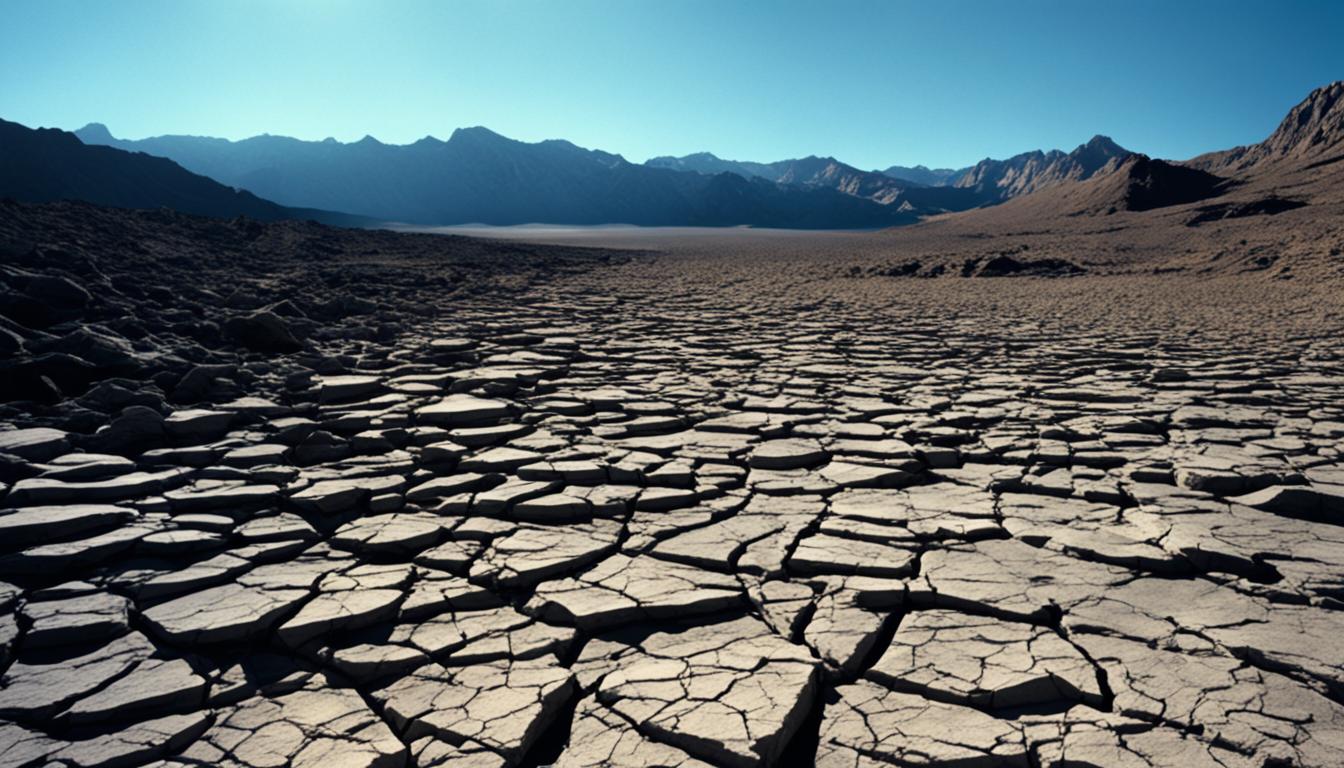Roughly 4.5 billion years ago, Earth was a molten sphere of magma. It had no oceans. As Earth cooled, water vapor and gases escaped into the atmosphere. This eventually led to rain, forming the oceans we see today.
The water in Earth’s oceans may have come from two sources. One possibility is ice-rich comets from beyond the solar system. Another is dust from the cloud that formed the sun and planets.
About 3.2 billion years ago, Earth was a water world. Little to no land was visible above the vast oceans. This ancient Earth set the stage for life’s evolution.
The formation of oceans was crucial for Earth’s development. Understanding this process helps us learn about life’s origin and evolution on our planet.
Key Takeaways
- Earth was once a molten sphere of magma, lacking oceans.
- Water vapor and gases escaped into the atmosphere as the planet cooled, later raining down to form oceans.
- Earth’s first water may have originated from ice-rich comets or dust from the solar system’s formation.
- About 3.2 billion years ago, Earth was a water world with little to no visible land.
- The formation of oceans played a crucial role in the evolution of life on Earth.
Evidence of a Waterless Earth
Scientists have found evidence that Earth once had no oceans. They studied 100 sediment samples from a 3.2-billion-year-old hydrothermal system in Western Australia. The samples revealed a unique composition of oxygen isotopes.
The ancient seafloor samples showed a higher ratio of oxygen-18 to oxygen-16 than modern oceans. This suggests that continental land masses were absent during this period. Earth’s surface was likely covered mostly by water.

The study also explores the link between mantle temperature and water storage. Earth’s mantle was much hotter in the past. This heat reduced its ability to store water.
Most water was on the surface, forming vast oceans covering the planet. As the mantle cooled over billions of years, its water storage capacity increased.
This process led to a gradual decrease in surface water. Land masses began to emerge, reshaping Earth’s surface. The cooling mantle played a key role in forming continents.
The Role of Plate Tectonics in Shaping Earth’s Surface
Plate tectonics transformed Earth from a waterless world to one with land and oceans. As Earth cooled over millions of years, mineral crystals formed in the crust. This process created the foundation for land masses to emerge.
Powerful tectonic forces pushed enormous, rocky land masses upward. These masses broke through the ocean surface, creating the first continents. This new land formed habitats for life to evolve and diversify.
Continental crust formation marked a major shift in Earth’s history. It changed Earth from a water world to a planet with both oceans and land. This reshaping had far-reaching effects on life’s development and spread.
Plate tectonics continued to mold Earth’s surface over time. It formed diverse landscapes like mountain ranges, plains, and ocean basins. This ongoing process recycles ocean crust and creates land.
These geological changes have been crucial in making Earth habitable. They’ve created a delicate balance between land and sea that supports life as we know it.
Implications for the Origin and Evolution of Life
Earth’s oceanless past impacts the origin of life theories. It suggests life may have started in deep oceans, not on land. This supports the hydrothermal vent hypothesis for life’s beginnings.
The watery past raises questions about extraterrestrial life on ocean worlds. Moons like Europa and Enceladus might host life forms similar to early Earth. Scientists can use Earth’s water world phase to refine their search for alien life.
Earth’s oceanless history shapes our understanding of life’s origins. It offers insights into how life began on our planet. This knowledge deepens our appreciation for potential life on other ocean worlds.
Studying Earth’s watery past helps us unravel life’s mysteries. It provides clues about the conditions needed for life to emerge. These findings could guide future explorations of ocean-bearing celestial bodies.

Leave a Reply